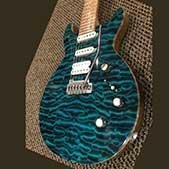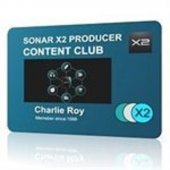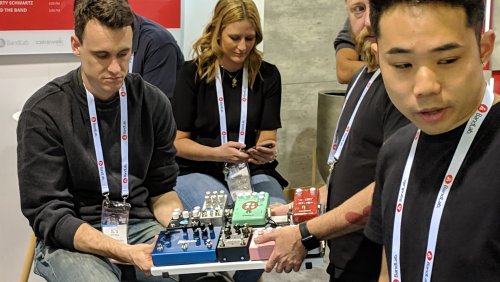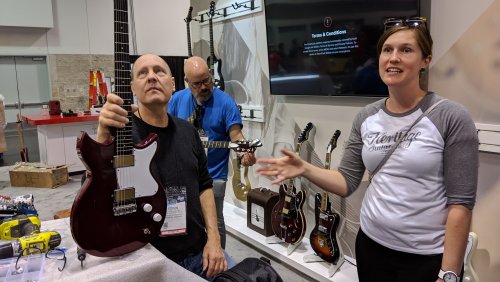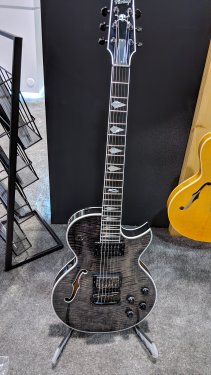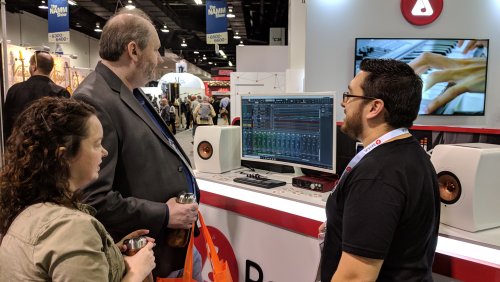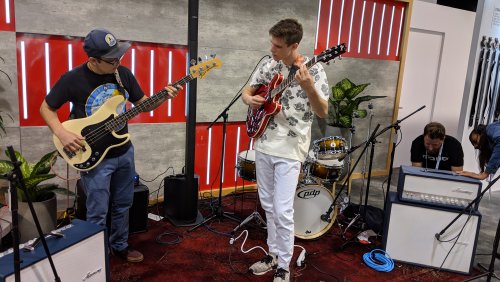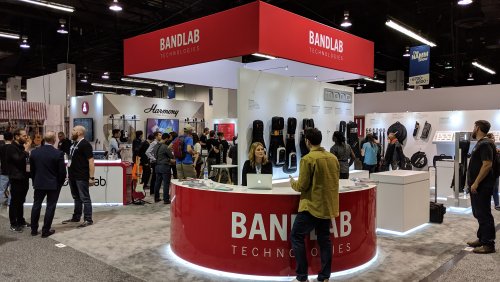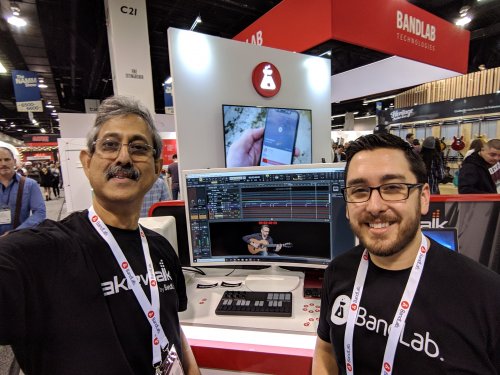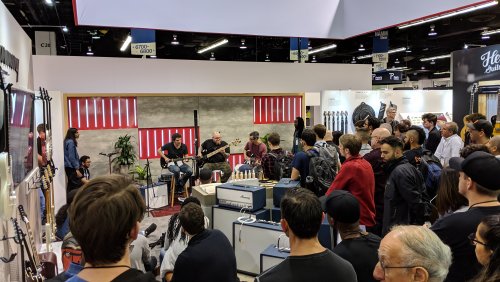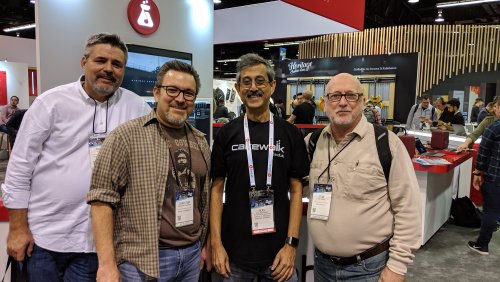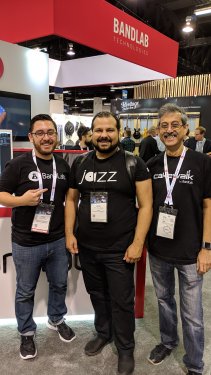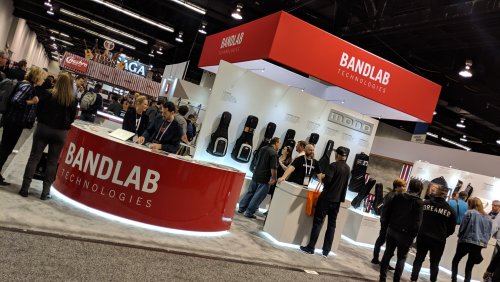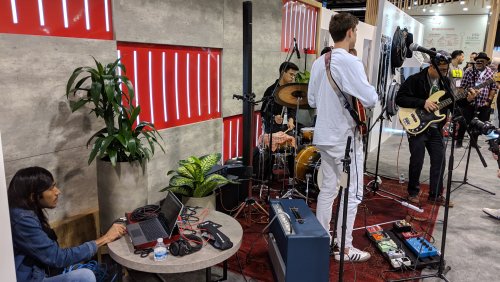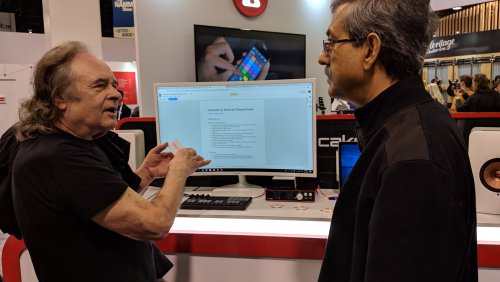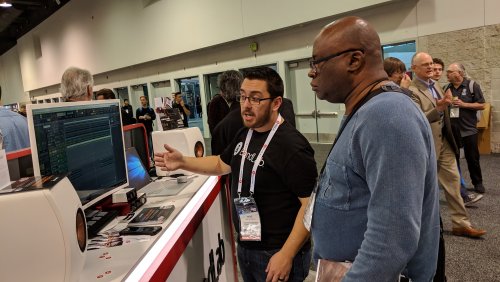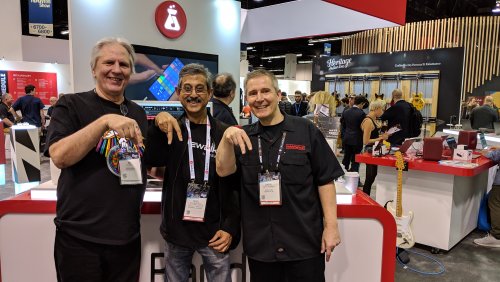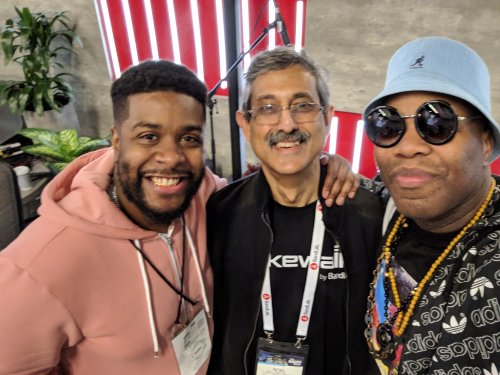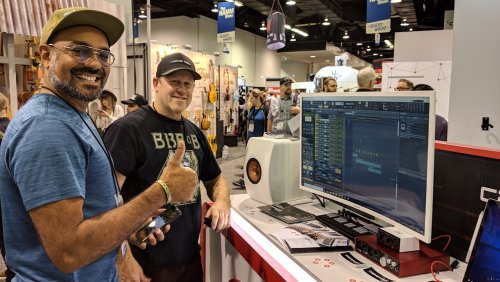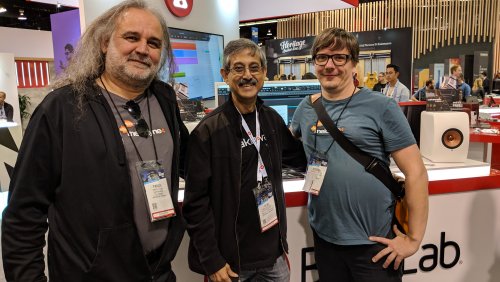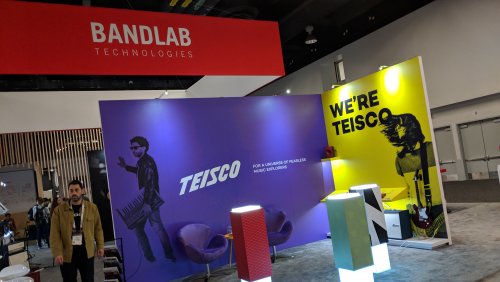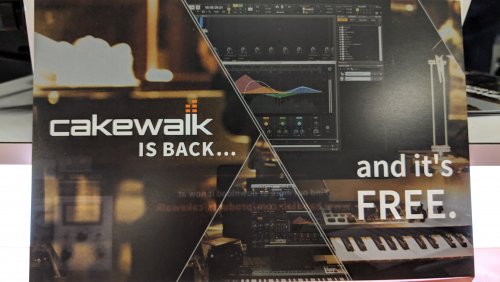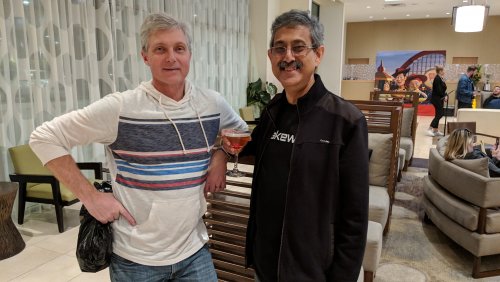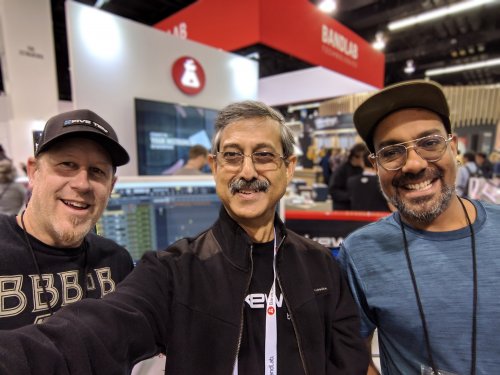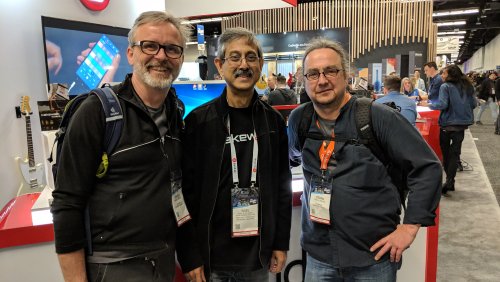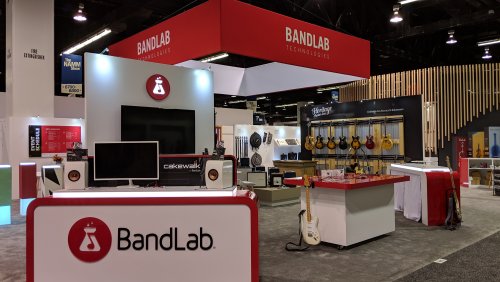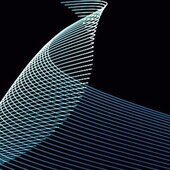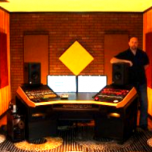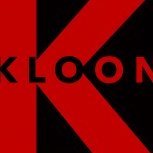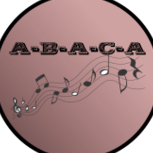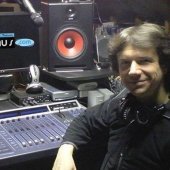Leaderboard
Popular Content
Showing content with the highest reputation on 02/03/2019 in all areas
-
The short answer to why it is free is that all core platform software from BandLab is free - thanks to Meng's vision to make a powerful platform available to everyone with no boundaries. As he indicated earlier, add on's to the platform such as plugins may not be free and of course BandLab also makes more traditional hardware and physical products . As far as Cakewalk goes our focus over the last year has been stability and workflow. We've made enormous strides in improving the software, optimizing it and even adding some powerful features that will benefit everyone. Looking back through all the prior releases notes it should be evident that we've delivered on this. If you have an old version of SONAR still on your PC load it up and compare it side by side to Cakewalk. I'm pretty sure you will feel a solid difference in doing normal operations such as loading projects, editing and mixing. I've got so many messages from users and even ex employees who can feel the difference. In addition to this we've also added several new features. So... use the software, be happy its free, make music8 points
-
My first concert was seeing Yes after the release of Close to the Edge at, I think, the Long Beach Area. I went with a car load of friends stuffed into my newly acquired and resuscitated Ford Falcon station wagon. At Yes' appearance at the 2017 R&R Hall of Fame Geddy Lee fills in for the late bassist Chris Squire and kicks @ss.3 points
-
AudioModern Riffer v1.1.2 for both Mac/Windows is available. Released: Jan 25, 2019 (based on file date). Download from your account - https://audiomodern.com/my-account/ No idea what has changed - no change log, no news on web site or KVR. Last email notice I received was for update 1.07 Still has issue where exported MIDI* only matches forward pattern not your program settings i.e. no backward or pingpong. *this is regarding the drag'n'drop MIDI functionality, recording the MIDI output works just fine. Found out about update when I checked creator's website after I noticed plugin was still for sale on AudioPlugins site for $29 (using reward discount) https://audioplugin.deals/riffer-by-audiomodern/2 points
-
Being from Boston I watched this band go from having their Demo songs on WBCN to world wide success in a matter of months. This performance of "Just what I needed" was a complete mind blower for me as I thought the cars were traveling in the wrong direction with Heartbeat city. Sure it was a commercial success but not like their early albums which had strong Punk and Rock influences. Their first 2 songs at live aid (You might think and Drive) were a Yawn. But when I watched the performance of "Just what I needed" I was floored. And it still holds up till this day.2 points
-
https://www.gearslutz.com/board/music-computers/618474-audio-interface-low-latency-performance-data-base.html Note that many interfaces/conditions are not in the first post, googe the thread for almost all interfaces RTL tables. Note that not all posts there have equal "quality". And "traps" are not only numbers taken from "some DAW", but also RTL screenshots when the interface has some build-in route and so the "loopback" was performed without DA-AD conversion. Also these numbers should be interpreted as "the best you can get". So, if you are able to use some mode (like 96kHz/32), you will get the same numbers. But it can happened the particular mode with particular interface/driver is not usable (on particular computer, DAW, project, etc.). It took me a while to understand that many (most?) people are not interested in low latency. They do not use in DAW monitoring, except may be MIDI for which latency is less important. So even some "high end" devices have big latency.2 points
-
I guess I found a second wind ?. It's all in good fun. Perhaps I twigged that you were an okay bloke who could take in new information. ? So. Since you mention concerns about the quality of the product going forward, there's an odd thing about software quality, and it's one of the reasons I've been so stalwart about defending BandLab's licensing Cakewalk as freeware. 20 years ago I was an in-demand software QA engineer, worked at some of the biggies (Adobe/Macromedia, Berkeley Systems, Informix). One of the biggest reasons that I left the field is that I came to the insight that there is an inherent disincentive to quality in shrinkwrap software (which means the kind Sonar was, stuff bought by regular consumers). Back in my day it was sort of an "elephant in the room." Nowadays books and articles have been written about it, and I hope at least that companies know that they need to be aware of it and try to safeguard against it. The big problem is that what sells licenses, and this includes new licenses and upgrades, is new features. Protest all you want otherwise, but that is the truth, we all, and rightly so, in my opinion, consider bug fixes something that we shouldn't have to pay for, at least not the cost of what the usual shrinkwrap upgrade goes for. It's part of why companies are trying to go to a subscription licensing model: once a product gets to a certain point of maturity, having to grub for licenses by coming up with a dozen attractive whiz-bang features every 6 months can become unsustainable. It may be that the market becomes saturated, it may be that there are only so many features that can be added, whatever. But that's getting ahead of things. For the sake of our model, let's look at "coding" as a black box that we pour money into and get software out of. And coding bug fixes costs the same as programming new features. Now if we switch our Coding black box over to bug fixes, it's the same as turning it off, because bug fixes don't make us money. However, even turned off, we're still pouring money into it. We're still paying the programmers and all of the other infrastructure that supports them. So bug fixes cost money! From the point of view of short sighted managers, and short sighted managers are unfortunately everywhere, they're even bad! If you fix the software that people already have, they won't want to buy the new version! And in defense of management choices, how many of us can say, if presented with a choice between the company surviving (and supporting the user base and the families of the employees, shareholders, etc.) and squashing a few bugs, what the "high road" would be? I observed the effects of this directly, in my teams. My "producers," that is, the managers in charge of each title, got bonuses for shipping the title on time. "On time" was more critical in those days when software was sold via physical media. It would be introduced at an important trade show and have to be on the shelves at the big stores the next day. What that meant, effectively, was that if I found a heinous crash bug 24 hours before we were supposed to go to manufacturing, sure, I'd be a studmuffin hero among the QA team, but up the chain the thanks would get less and less hearty. So I'd be the pariah for being good at my job. The better I was at my job, the more money I cost the company, because I switched the Coding Black Box over to fixing bugs. Who wants to cost a boss you like and are trying to please a $5000 bonus? Now here we are, with our case of Sonar. A venerable shrinkwrap program's company was dissolved and the program itself sold off. Some of the former staff were hired back to continue work on the code, and the program reissued under a different name and licensing scheme. The parent company has a diversified portfolio in the music field, including instruments and an online DAW/musical social media site. Cakewalk is positioned to continue as an updated version of Sonar, as well as function as an offline front end to the musical social media site. The company also has freeware DAW's for iOS and Android that function as front ends to the site. (everyone knows this, right? BandLab already had two freeware DAW's in the marketplace before they put out Cakewalk) What does this mean for the quality of the software going forward? For a single copy of Sonar, Cakewalk was paid hundreds of dollars, which went to pay programmers, QA engineers like I used to be, people to administer the beta program, artist relations, endorsements, power lunches with Microsoft insiders, etc. That was an incentive to put out a quality product. Nobody would buy it if it wasn't any good, right? Now anyone can download the whole thing, and BandLab gets diddly squat. Revenue is zero whether anyone downloads it or not. Where is the incentive to improve it or fix bugs or add features or do anything at all to it? There's no threat of failure if it stinks, no reward for success if it's great. There's neither carrot nor stick, so what makes the donkey do anything? Okay, remember our black box, "Coding?" It's smaller now, but more efficient. The new owners only hired back a small percentage of the old company's staff, and I suspect programming is done in home office(s). They don't have to throw as much money into the box because the infrastructure is shared, smaller, etc. Support is web only, no phones. There is no sales staff, etc. Fewer licensing fees to bundling partners. On and on, the costs that were once involved in making the old program are much reduced. The new company is diversified and has deeper pockets than the former owners. As freeware, the program no longer has to sit up and beg for new license fees. There are no license fees to beg for. That means we can do whatever we want with the black box! In my experience, programmers love being given the chance to go through their code and fix bugs. They tend to be picky and focused about their work in the first place, and who likes having something they made out there in the world with obvious flaws in it? It would be like a mix engineer shipping a track with a big plosive pop in the vocal and not being allowed to fix it and having to listen to it over and over. Noel and the other programmers may be exceptions to this, but probably not. This goes for optimizing as well. Just like us, they look at it and think "I could do that so much better if I could take another pass at it." Well, who's got the keys to the black box? And a loyal user base would usually rather have the smaller features they've been begging for for the the past 3 years than some new thing that only 5% of the people who use the software are going to touch. Case in point: those note values in the Piano Roll would not sell a new license or upgrade to anyone, but they are really nice to have, and it would be a pain not to have them. The interleave indicators are another. Rename Clip. Ripple Edit button. Export Module. Plug-in Manager. Fast VST scan. All these "little" things that when added up, make Cakewalk feel like a "deluxe" version of the program I downloaded in April 2018. But added up, could you even call it Cakewalk 2.0? So there you are, Andy, that is my essay on why I think you have nothing to worry about, only things to look forward to, with a freeware licensing model. It's not something that reduces resources, which therefore reduces quality, it's something that gives the people who produce the software more freedom to make the program better, with "better" meaning what most of us would like it to mean. Faster bug fixes, features added that tend toward the useful rather than the flashy, and integration with a forward-thinking online collaboration platform. Oh, also we don't have to pay any money for it.2 points
-
I see watt you did there Jyemz. Sadly, Jose did not.2 points
-
Hope it's Ok to post this here... if not, feel free to publicly flog me I decided to brush the brain dust off my C++/COM/UI programming and write some plugins for Cakewalk... The first (little) one is a MidiFX plugin called CSHumanize... because randomization is easy It's basically a replacement for the CAL script "Humanize" with a couple minor enhancements. It's free and available at my new, hastily set up site http://viramor.com if you'd like to test it out. It's 64-Bit only, but if any of you CAVEMEN still using 32-Bit OS's are interested, I'll compile a version for you. Yeah, I know you can add randomization with the Quantize plugin, but this one's a slightly different shade of blue1 point
-
Hi everyone, We had an amazing NAMM 2019 show and it was so great to meet so many long time Cakewalk users as well as our business partners there. BandLab had a a beautifully designed space showcasing all the brands and Cakewalk had a very prominent presence at the show. Here are a few pictures. We had stage performances from several artists showcasing all the BandLab brands throughout the day including Heritage guitars, Harmony amps and guitars, and Tiesco pedals. We had a mobile recording rig set up and Cakewalk was used to record all the performances. Ashwin from BandLab and @Mike Balzarini did a fantastic job on the live sound and recording setup at short notice and everyone commented on how great the performances sounded. We recorded 8 channels for all the sets and I would upload the projects at the end of the day for @Jon Sasor and @Jesse Jost to mix and upload the finished tracks to BandLab using the new Export to BandLab feature that we just added in CbB. Jon did an amazing job mixing and mastering these at short notice. To listen to all the great music recorded live check out our NAMM 2018 feed. Jesse also posted some more information about the artists playing. Thanks again to you all for your support and for all our users who took the trouble to come to NAMM and meet us. It was great listening to your feedback and meeting you face to face. PS: I forgot to mention. This year all the demo songs played at NAMM came from Cakewalk users. It was great showing real world production projects at the show. Some of these were were full projects with all the plugin's intact. The Silverlight tune had tons of Slate plugins as well as an MP4 video clip synced to it. It played with no problems even at 256 samples on a Surface Book. Also some NAMM Videos that Meng shared in another thread:1 point
-
1 point
-
AQUIVER delivers 300 powerful, deep and soaring granular sounds. It is powered by a custom granular engine that can play hundreds of small grains of audio with no huge CPU impact. AQUIVER is ideal for movie scoring, underscore and futuristic sound design. It features realtime recording of knob movements, a FX engine with bread-and-butter effects and a unique lock switch. Using that, you can skip through instruments while locking the current settings in place. Perfect for trying out different sounds without loosing current knob and/or effect settings. All the parameters of the effects section can be modulated in realtime with one knob as well. http://rigid-audio.com/products_aquiver.html1 point
-
1 point
-
I've seen this at least a dozen times before and still think it's awesome. They couldn't have found anyone better to take Chris' place (or who looked up to Chris more).1 point
-
I didn't reply because I just thought you were trolling. If you play guitar, then you should be able to tell that JF's playing was no where's near average by any comparison. I have no credentials like Kenny, but I did play in a band with Craig Goldy (Ronnie James Dio's godchild who played with Guifria and Dio), and I used to hang out with Walter Trout and Eddie Van Halen down in So. Cal. I can tell the difference between average and above. Most guitarists would give their left nut to play as well as JF did in those videos. But (I guess), that's just my opinion.1 point
-
Wow, this hit me just right this evening. Outstanding. Edit: I checked out the original, which I hadn't heard before. I have to say, you've really brought out the melody, and I love your arrangement.1 point
-
Oh Boy I bet that studio needed a power washer with all that hair spray?1 point
-
As a kid I first heard Jose on Detroit radio doing Light My Fire around '68. He played the National Anthem at Tiger Stadium & I remember many were upset at his Latin rendition. I was always amazed by his playing, still am, a great guitarist. He's playing here in Miami Feb 17th, glad to see his career is still going strong.1 point
-
Andy, you and I have more in common than we knew. I've done some mechanical design and drafting in my career, mostly sheet metal, and I was/am a pretty good printed circuit board designer. I'm old enough to have learned with pencils and tape and then switched to CAD in '83. So you've already been exposed to the changes resulting from what I'm talking about: AutoCAD (I interviewed there a couple of times) was one of the first houses that I know of to switch to the subscription model. And you were there, the clients howled at first. I still have a gut-level dislike for that model, first because I like to own things, and second, I do a lot of different things and I might not even use Photoshop or whatever for a couple of months, and my middle name is Scott, if you get me (it actually is). I don't want to be paying a monthly subscription fee and then not using the program that month. But in a market where we can have brothers and sisters still happily running Sonar 8.5, how can people make money from selling shrinkwrapped software? My buddy Geoff whom I've mentioned around here, the Pro Tools man, he was one of these Pro Tools users who was Krazy Glued to Pro Tools 10. I guess PT 10 was where they made some architectural changes and dropped support for the PowerPC architecture on MacOS and some of their own interfaces, and early upgraders reported snags and it led to a lot of FUD. PT10 won't run on OSX past a certain revision and all this, basically your studio will be frozen in 2011 if you have it. But he has this beautiful Mac Pro tower, and I was trying to collaborate with him, and I was sending him deals on plug-ins and asking him to download conversion software so we could both use FLAC, and his system didn't support anything. The software I wanted him to run wouldn't run on the old OSX, PT10 didn't know what a FLAC was, PT10 didn't know what an AAX plug-in was so none of the cool free and $1 Pluginboutique deals I sent him were any good. He started doing everything on his iPhone because his computer couldn't run anything. I finally called BS and said we're going to get you on PT11. This can't go on. By the time I got him to budge, it was even PT12. I researched everything, and it looked like Avid had gotten their act together, and in the end it worked great, he was so stoked he maxed everything on the Pro out, and because he had bought the thing so many years earlier, he could fill it with all the RAM and SSD's he wanted for peanuts compared to when he first bought it. He went from 4G of RAM to 32, converted entirely to SSD. The thing runs like a rocket sled now. And we even have his whole PT10 system hard disk as a time capsule in case something goes wrong.?♀️ He bought the "perpetual" license (sorry if anyone cringed), but it was way difficult to find that option and choose it over the subscription. they really, really want you on that monthly gravy train. That's what their business model is these days. Anyone who wants the other, old kind of license is treated as an anomaly. And I'm sure we all know, Adobe has followed AutoDesk into all-subscription land. Or they tried. Did they make it stick? So maybe we should think of Cakewalk's license not as "here's a copy for free," but rather as a subscription that costs $0.00 per 6 months. I don't know if BandLab's experiment is going to work. As a software industry veteran and industry observer (and very briefly, writer for InfoWorld) I am fascinated to see where it goes, though. This freeware thing is becoming way more widespread. My computer was already full of freeware before Cakewalk by BandLab appeared. I have 3 Windows systems, all were running Windows 7 until a month ago. Microsoft just did the same thing that BandLab does and gave me 3 free licenses for their current OS, Windows 10.1 point
-
The sixth monitor is only to watch TV, movies from internet on my big screen TV. Do you think I moved this window to the 6th monitor on purpose? Windows is still poor with managing multiple monitors.1 point
-
One core can show higher use depending on the project since the multi-processing engine scheduler has work to do to farm out mixing tasks. The scheduler itself takes some time on one of the cores. Additionally there is GUI processing which is always on one thread. In most cases this is really not something you should care too much about. There is no such thing as perfectly balanced cores in multiprocessing unless you have artificial equal load tasks. There is one thing you can try assuming you have a quad processor or higher system. Go to Preferences | Configuration file and set ThreadSchedulingModel to 2. This uses an independent thread for scheduling tasks and may may result in a more balanced load with Quad processor systems or higher.1 point
-
1 point
-
1 point
-
Your version of this is just great. I think it all hangs on the vocal, and your voice is quite good! Just some opinions from random internet guy: 1) Get to the piano/drums a verse earlier. It's very powerful when they come in, why make people wait? 2) There is an autofocus thing going on with your camera, it's not timed to the beat, and it's distracting and detracts 3) Your visual presentation is great! ( knit cap, glasses, darklit in studio - it looks good!) but the video over the course of its run time is too static. What about some cutaways with some slow dissolve transitions to some nice clips that support the mood? River flowing, a clock tower, dolphins in space - any video or even motion images that support your mood? Seriously, probably not dolphins in space. Your voice is I think perfect for this stripped down version, and tonally how you've captured the guitar is very pro sounding to my ears. The other instruments are great as well. Just take the video itself to version 2.0 . . . I really liked it. cheers, -Tom1 point
-
Always liked that song, used to be one of my 'getting ready to go out' tunes.1 point
-
1 point
-
That was a wild ride - it's quite creative. The mix sounded fine to me. To me it has a positive, upbeat mood to it.1 point
-
1 point
-
You may have your manual offset set wrong. I would re-profile your audio interface and make sure to try all driver modes to see what works best for you. ASIO driver mode is mostly the best, Also, it could be a plugin effect, if you are using it for recording, as some have hidden buffers and those are not meant for recording, just mixing and mastering.1 point
-
You're being a bit uppity here, aren't you? First of all, unlike you, I'm NOT always in the middle of a project. Sometimes after I finish one I can go weeks and weeks in between. But when I'm in the middle of one I don't want to find myself dealing with a DAW that doesn't load or has developed other bugs that impede it's functionality. If I see others having issues (as I saw with this particular update) I hold off until my current project is finished. THEN I DO THE "TESTING" MYSELF! Also, who in the hell said anything about a DEMO?! I've been using Cakewalk by Bandlab since April 2018. The issue is an UPDATE! Free or not, a DAW that suddenly doesn't function well (because of a new bug or whatever) is useless at least until the bug is fixed. I just wanted to make myself clear. Sorry if I offended your sensitivities. Thank you for all your useful contributions to the cause. JB1 point
-
Not familiar with original version, but I find yours very nice. Great vocal work and the little string bit going on is very tasteful. ?John B1 point
-
Larry, nice said. I really like when people have common sense like you! It is the reality that we have to compare to the numbers that we get supplied by the marketing divisions of hardware companies. They always want you to believe that you need more performance again!1 point
-
Very nice! Love when the strings come in. The guitar is panned slightly to the left, i found that a bit annoying.1 point
-
1 point
-
beautiful voice and song. You have a good ear for drums. Do you play? Some people make these types of arrangements way too busy.1 point
-
It's all about trying to play those nylon strings like an electric.1 point
-
Here are the improvements made to CbB since BandLab took over. All I see is a focused effort on improving the quality of the software, without needing to focus on releasing the "new feature of the month". That is what many users were asking for even back in the Gibson days, after the fast release monthly Platinum update cycle began. Current release notes: https://www.bandlab.com/products/cakewalk/whats-new See previous release notes here: https://docs.google.com/document/d/1aFOe_zJrd3x2EnaZ_Jc3iSbZPG2WANiCD4_RP83OjlA/edit?usp=sharing1 point
-
1 point
-
Thanks @Tiger The Frog without your review I might have ended up passing on this. Picked up Terracotta and found that it was more that a one trick pony. The ad says "7 layers of sound mix for unique sound design" Thought they would be just 7 terracotta versions or effects but 3 of them are actually separate (good sounding) instruments. So it's like getting 4 instruments (Terracotta, Celesta, Steel String and Music Box). So now I'm going to pick up Pheonix as well1 point
-
And this made me do a Google search 'cause, as my reply implies, I didn't know he was actually blind (born blind for that matter). That explains his not looking at the fretboard and, probably, his exceptional hearing while tuning.1 point
-
I'll be publishing new tutorials on this channel in the near future as well... https://www.youtube.com/user/ScottGarrigus?sub_confirmation=1 -- Scott R. Garrigus - http://www.garrigus.com * Cakewalk SONAR Video Tutorials: https://www.youtube.com/user/ScottGarrigus?sub_confirmation=1 * Author of the Cakewalk Sonar and Sony Sound Forge Power book series: http://garrigus.com/?PowerBooks * Publisher of the DigiFreq music recording newsletter: http://www.digifreq.com/ * Publisher of the NewTechReview consumer tech newsletter: http://www.newtechreview.com/1 point
-
1 point
-
1 point
-
I have been sitting in a big cast iron frying pan trying to thaw out my rear end. My wife yelled from the living room that I should just throw that bacon out. I think it's spoiled. Actually, I couldn't get logged in but I got it handled. Wednesday we had -28 with -57 wind chill. The high was -15.1 point
-
1 point
-
1 point
-
1 point
-
Yeah, genre-wise this is right up my alley... loved it. Funny, last year I did something similar by taking an all-MIDI project originally created in the mid-90's for hardware synths, and updating it with audio tracks and soft-synths. The process was fairly painless and actually kind of fun.1 point
-
Honestly, time is a precious resource. I'd much rather they distribute a PDF user guide so that we can search and view while on the go. I'd much rather read the manual while I'm riding shotgun or between sessions at the training center than waste hours of my time watching YouTube videos. Not having a PDF manual, at least the old Sonar Platinum manual with the obvious caveat that some things may differ, is awful. I have time in between activities while out and about, but I'm definitely not going to sit in front of YouTube and waste that much time. I want an actual PDF user guide.1 point
-
Sorry, do you know if there is a way in Theme Editor to edit the colors of the palette of the tracks? In my opinion they are too dark for the current black background. At the time I have no other way than clicking the "other" button and choosing a brighter color, but I would like to bright the main palette itself. Thanks.1 point
-
Don't know who BassDaddy is (that I know of), but Mesh is usually posting over at Beyond My DAW though I seem to recall seeing that he's very busy right now and Bapu wants him recording stuff as well (a little NagBap goes a long way!).1 point


